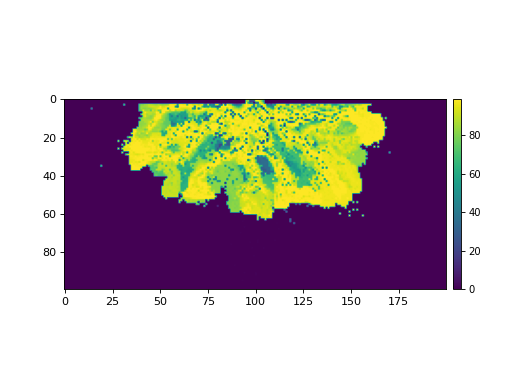deltametrics.plan.compute_surface_deposit_time¶
- deltametrics.plan.compute_surface_deposit_time(data, surface_idx=-1, **kwargs)¶
Compute the time of last deposition for a single time.
This method computes the timing of last deposition for each location for a given time_index. This is done by finding the last time the bed elevation was outside of a “stasis tolerance” length scale at each location. Therefore, the function requires the spacetime dataset of bed elevation, at a minimum, up to the point in time of interest.
Warning
only works for indices (not times) as implemented.
- Parameters:
data (
DataCube,ndarray,DataArray) – Input data to compute the surface deposit time from. Must be DataCube or a array-like (ndarray or DataArray) containing bed elevation history, at a minimum, up until the time of interest.surface_idx (
int) – The index along the time dimension of the array (dim0) to compute the surface deposit time for. This number cannot be greater than data.shape[0].**kwargs – Keyword arguments passed to supporting function
_compute_surface_deposit_time_from_etas. Hint: you may want to control the stasis_tol parameter.
- Returns:
sfc_time – The time of the surface.
- Return type:
ndarray
Examples
golf = dm.sample_data.golf() sfc_time = dm.plan.compute_surface_deposit_time(golf, surface_idx=-1) fig, ax = plt.subplots() im = ax.imshow(sfc_time) dm.plot.append_colorbar(im, ax=ax) plt.show()

The keyword argument stasis_tol is an important control on the resultant calculation.
fig, ax = plt.subplots(1, 3, figsize=(10, 3)) for i, tol in enumerate([1e-16, 0.01, 0.1]): i_sfc_date = dm.plan.compute_surface_deposit_time( golf, surface_idx=-1, stasis_tol=tol) im = ax[i].imshow(i_sfc_date) plt.colorbar(im, ax=ax[i], shrink=0.4) ax[i].set_title(f'stasis_tol={tol}') plt.show()
